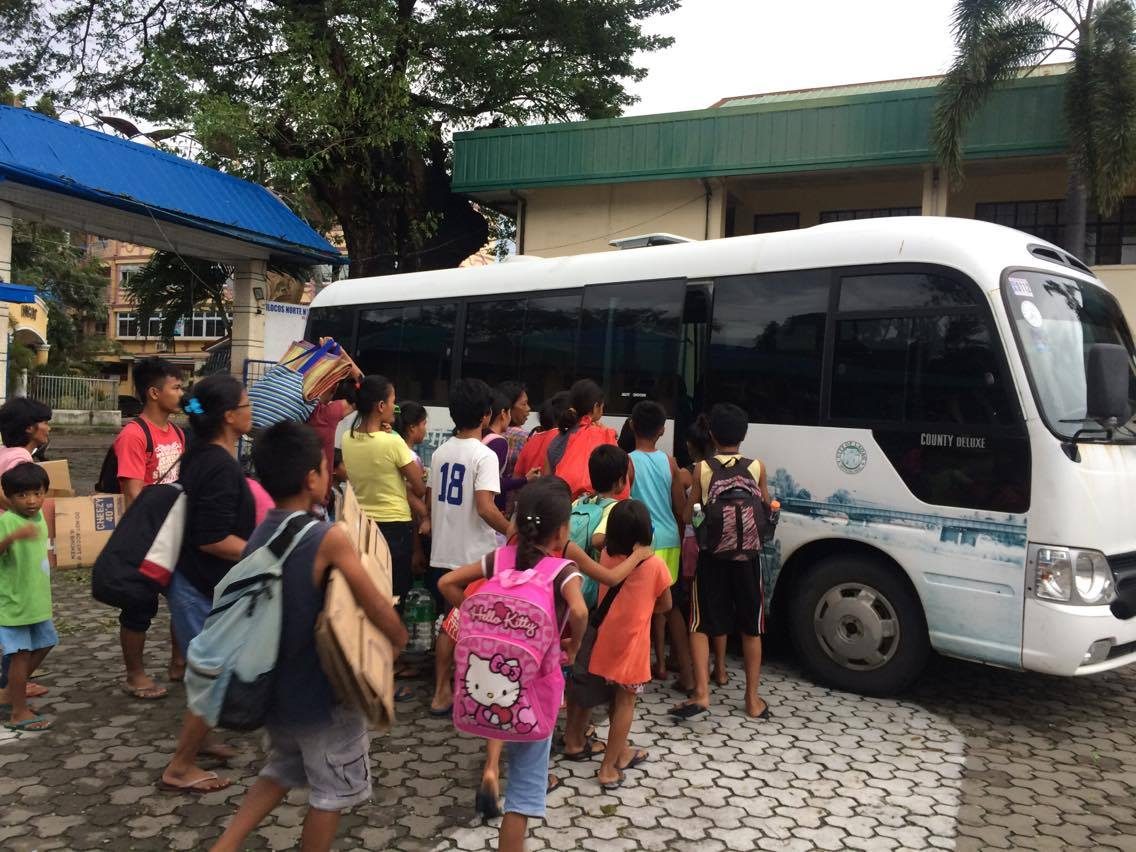SUMMARY
This is AI generated summarization, which may have errors. For context, always refer to the full article.

ILOCOS NORTE, Philippines – Several residents of Ilocos Norte were able to go back to their respective homes on Thursday afternoon, October 20, after the onslaught of typhoon Lawin in the whole Ilocos region and nearby provinces.
In the capitol city of Laoag, at least two evacuation centers covering 78 families have sent their refugees home.
Residents of Barangay Caaoyan, a coastal barangay, went home at around 5:00 in the afternoon riding a coaster provided by the local government. (READ: Typhoon Lawin leaves PH Area of Responsibility)
On the other hand,only a few families remain in Plaridel Elementary School where some 93 people have evacuated. Mother Michelle Morgado said that some of their fellow residents went back to their own homes because they still have to work.
“They are not office workers, they are those working in diners and other service jobs,” she told Rappler in Filipino. Governor Imee Marcos has extended the work and class suspension in all levels of both public and private schools until Friday, October 21, for the relief and rehabilitation of the whole province.
Morgado also said that their roofs have been washed away by the strong winds and electricity is still out in their area.
“We prefer here because some of us have children, babies,” she explained.
Off-city
Ilocanos living in the nearby town of Paoay were also told to go home by municipal Mayor Jessie Galano.
Almost all of his constituents are back home except for those living in Barangay Calaguip, which is near the sea. He said that there is still no electricity in their areas that is why it is better for them to stay in the worship house where they are at now.
The coastal dwellers said they feel safer there, recalling how frightening last night’s typhoon was.
“Sobrang takot talaga halos di kami nakatulog sobrang ingay talaga nung hangin parang may nag-giyera sa langit talaga,” Jane Cac said as she held her baby.
(We were really scared. We barely slept because the wind was so noisy like there was a war in heaven.)
She also took the opportunity to call out to her relatives in Mindanao who is still uncertain of her safety.
“Huwag na po kayo mag-alala sakin, safe po kami ng family ko, panatag na po kayo,” she said. (Don’t worry about me. My family and I are safe. You can stay put now.)
Another resident, Jeramel Lincuna, said that Lawin was the strongest typhoon he faced in his 8 years in Ilocos Norte.
Damage cost
Lawin, previously categorized as a super typhoon as strong as Yolanda, damaged the northern provinces of Ilocos Norte, Ilocos Sur, Cagayan and Isabela when made its landfall on Wednesday at 11 PM. (READ: Lawin kills at least 8 in PH)
Laoag City Vice Mayor Michael Fariñas said that the destructions in their area cost as much as P34 million as of Thursday. Ruined infrastrcture is estimated to be at P27 million while agricultural damage was at around P7 million.
The provincial government has yet to release their estimates. Vice Governor Eugenio Angelo Barba said that they will still have to consolidate reports coming in from all municipalities. They had a difficult time coordinating since power and communication lines were interrupted.
Meanwhile, relief goods from the Department of Social Welfare and Development (DSWD) arrived Thursday afternoon. Each of the 3,000 boxes contain 6 kilograms of rice, 4 canned goods, and six sachets of coffee. – Rappler.com
Add a comment
How does this make you feel?
There are no comments yet. Add your comment to start the conversation.